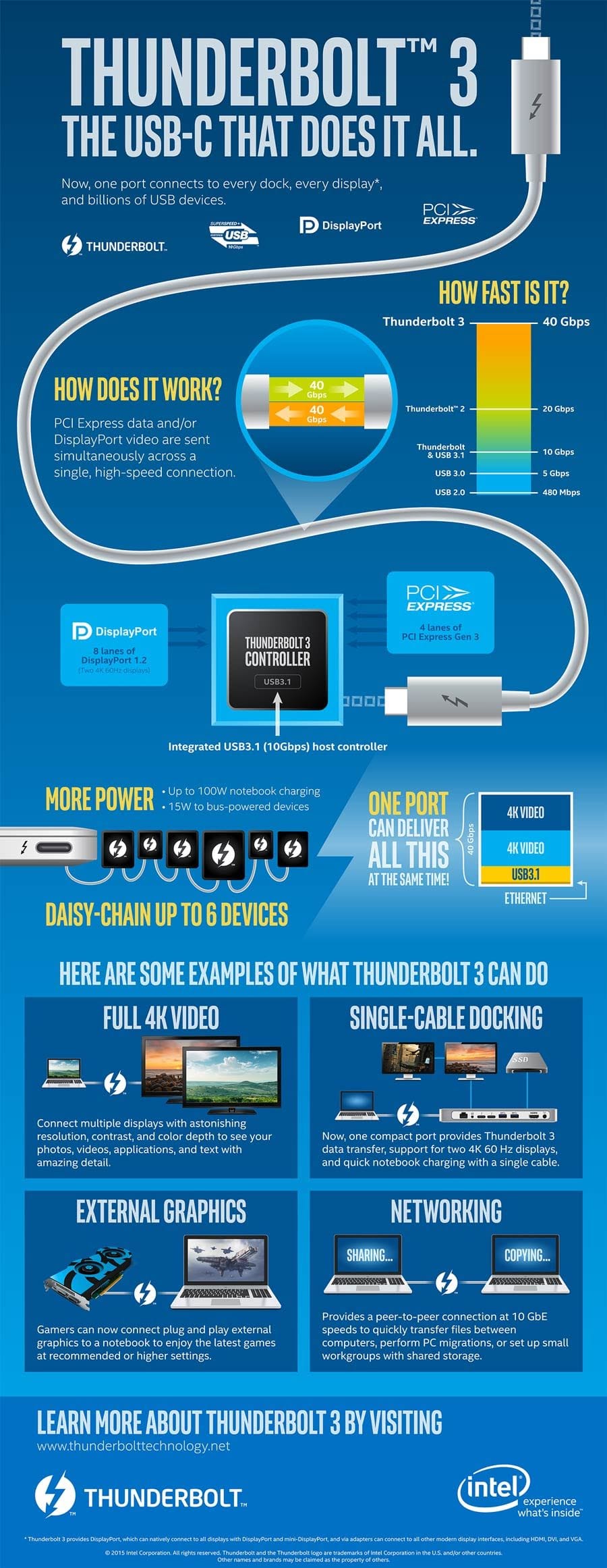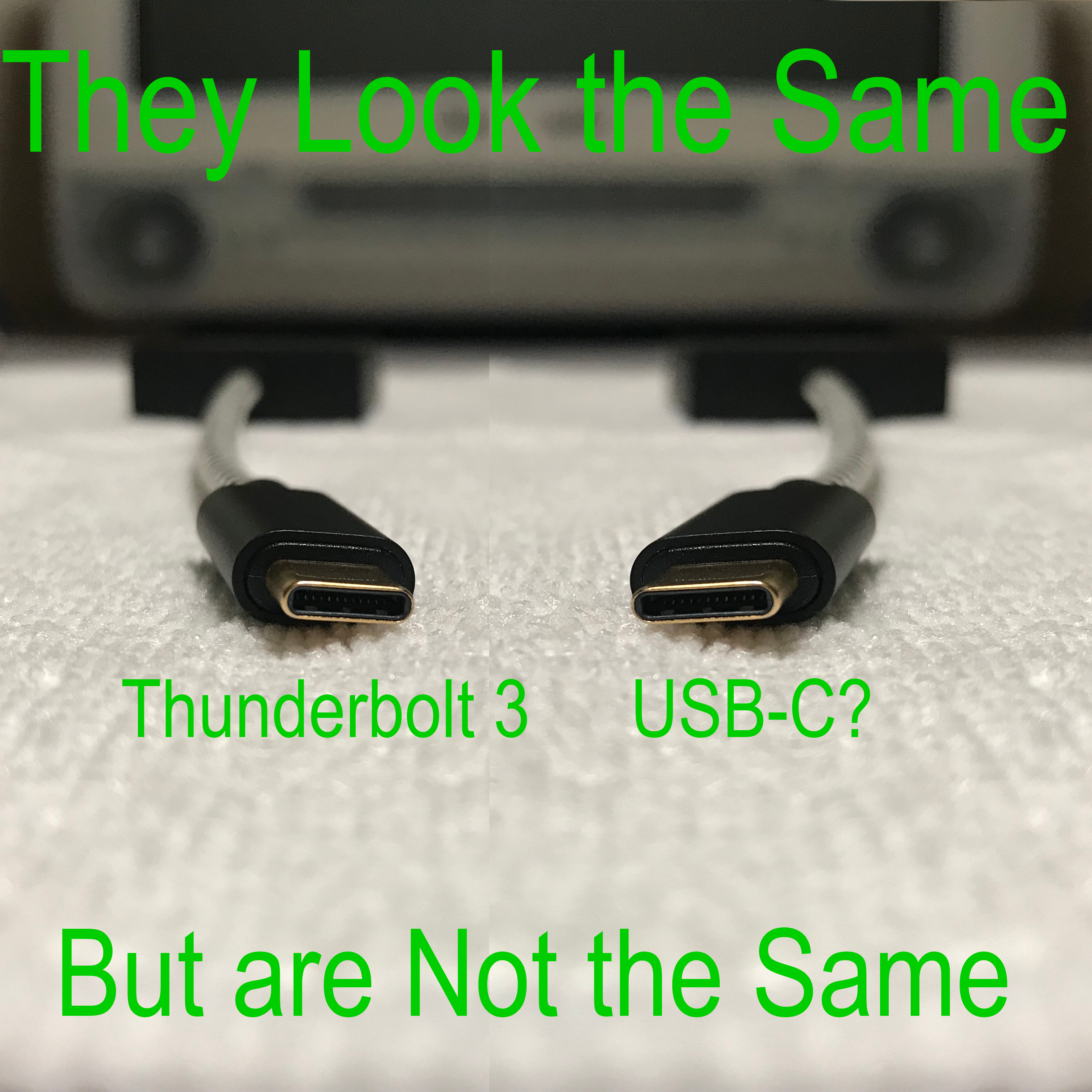As computers are getting thinner and lighter they are having to find ways to get them to that point. One way is to shrink the size of the ports. That’s where USB comes in USB is one of the most commonly used ports. They are used for thumb drives, keyboards, mice, and basically anything else you might plug into your computer. The problem with them is that they are thick and hard to deal with. Then Intel’s Thunderbolt 3 came into the picture, replacing there Thunderbolt 2 standard. Suddenly computer manufacturers started advertising these ports of the future but what are they? They look the same but aren’t the same. Thunderbolt 3 can do more than USB-C. Keep reading to find out the features of these new cables.
Thunderbolt 3
Thunderbolt is a project developed by Intel Inc. With file transfer speeds at 40Gbps. With this speed, you are able to connect two 4K HDR displays and an external GPU. This makes Thunderbolt 3 ideal for large files like backing up your computer to external hard drives.
Other Thunderbolt 3 features include:
Single cable docking: Use one cable from a dock two your computer to transfer data and up to two 4K 60GHz displays.
- 4K Video: Connect multiple displays with a 4K resolution for the ultimate gaming experience.
- External Graphics (GPU): For portable computers like MacBooks the graphics cards are slow in order to conserve battery life and just for compatibility reasons. External GPU can speed up graphics for gaming and photo editing.
- File Transfer: Connect multiple computers using target disk mode or external drives and get file transfer speeds up to 40Gbps.

USB-C
USB-C is the same as any other USB standard the only difference is the design. USB-C is the replacement of types A and B. Now you no longer have to do the USB flip because it’s universal. It supports up to 15 watts of power to external devices like thumb-drives and iOS devices (using lightning to USB-C cable available at Apple). They, like USBs A and B, are backward compatible with USB versions 2.0, 3.0, and 3.1. USB-C is nowhere as fast or powerful as Thunderbolt 3. Although some of the advantages include consuming less power which is helpful for portable devices like the MacBook.
How do they Work Together?
Since they use the same design the devices like the MacBook are able to implement them both into one port. For example on the 2016 MacBook Pro and up all of the ports are USB-C and Thunderbolt 3 compatible. So it doesn’t matter which port you plug in your external 4k display or your USB-C external drive. There is no more flipping and flopping because both are symmetrical so no matter which way you twist the port it will always go fit.
Lightning is Not the Same Either
Yes, Lightning, USB-C, and Thunderbolt 3 all have rounded ports but they all are not the same. USB-C and Thunderbolt 3 have the same plug but they are not the same as lightning. There are two ways that you can tell the difference between USB-C and Lightning. One way is the color, lightning cables have a white meanwhile USB-C is silver. Also on the exterior of the lightning cable, you can see eight prongs with USB-C, on the other hand, the prongs are on the inside of the hollow cable. This brings me to my next difference the hollow interior of USB-C. So the next time you go to pick up a rounded cable you can use this list of guidelines to figure out what it is.
Helpful Links:
- Wikipedia.org: Thunderbolt
- Wikipedia.org: USB-C
- Rocket Yard: The Macsales.com Blog: Thunderbolt 3 & USB-C: Not All Cables Created Equal
- Intel: Thunderbolt 3 Technology
- Engadget: Intel takes two big steps to push Thunderbolt 3 on PCs
- Thunderbolt technology.net: Thunderbolt™ 3 – The USB-C That Does It All
- PC Magazine: What Is USB-C? An Explainer
- ExtremeTech: USB-C vs. USB 3.1: What’s the difference?

